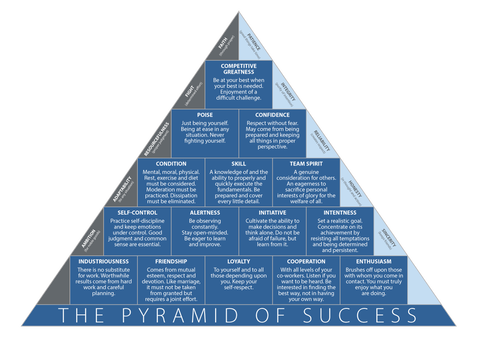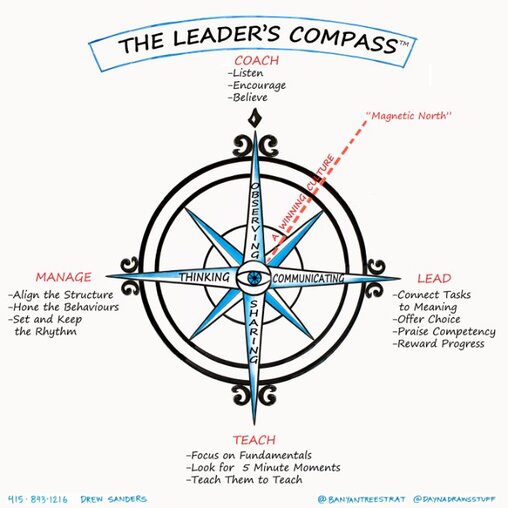|
Along with team building and listening to your players, coaches and leaders should seek to create an environment where everyone can learn how to go at game speed both individually and as a unit. A leader needs to have a plan and a correlating structure for going all-out together because power without control can get you off the rails and, in the ditch, quickly. The cauldron of controlled conflict will allow your team to trust each other more as they see that others can match their best and that you can even get the sum of the parts to add up to more when the active ingredients of trust, precision and planned adaptability are inserted into your practices. Your best performers are going to want to push their limits, and you will need hard practices to allow everyone to improve together. As Tom Hanks so perfectly said in his role as the washed-up Jimmy Dugan in “A League of Their Own,” It is the hard that makes it worth it. Why do you need trust? Sports teams give us great examples of this and while the correlations to work are not 100% they are close enough. The team that doesn’t trust each other when under duress will stop sharing the ball and a form of “hero ball” will ensue. Bill Belichick of New England Patriots fame has been known to try and force this on his opposition by taking away one key player from the other side and seeing if the other team can adapt. Adaptability is another key ingredient, but before you can adapt you need to be able to trust each other. In a work context this could come up if a colleague who normally plays a key role leaves your company or is out sick. Who else can step into their shoes and be ready for the big presentation to a prospect or provide an internal report? Our magic formula for building trust is SE=C=T=Success SE stands for Shared Experiences, C stands for window into your Character, and T stands for Trust. Going full speed in practice or in a conference room and being hard on the idea or ball and kind to each other is a fantastic, shared experience. With enough of these shared experiences everyone on the team starts to understand the character and commitment of all involved and this organically builds a trust that is experience born. Why do you need precision? To manage is to think for, with, or through something by yourself or with others. In this situation a good manager is thinking through the process of running an effective all-out practice or meeting where everyone is committed to being hard on the idea or ball while still being respectful of others. The precision comes in the form of the constraints you will put the team in before you release them to perform. In a sales context you could create a scenario where you are up against company B for an RFP and the buyer is saying that they are offering a similar product but for 20% less. What questions should you ask and how should you respond? In a sports context you can create drills where you are giving one side an advantage and then teaching through the constraint to help the players adapt. The best in business and sport identify moments of maximum influence (MOMI’s) and train their teams to be aware of them and how to react and perform with great fundamentals. The prior preparation of the leader is crucial to leveraging the effort that assertive play is asking of your team. Don’t ask them to go 100% if you haven’t prepared for everyone to receive at least that much in return for the effort. Why do you need adaptability? The final triangle in John Wooden’s pyramid of success is Competitive Greatness. "To be at your best when it is needed. Take enjoyment of a difficult challenge." It has been decades since Wooden's UCLA teams dominated college basketball but even then, it was a highly competitive sport with hundreds of great players on different teams all of whom were striving to win the NCAA title. Wooden won nine titles, including seven in a row, and for most of the games would be seated on the bench. This is in stark contrast to his fellow coaches at the time and more obviously in the present. Watch any game on TV and the second a big play is made the camera goes straight to the coach’s reaction, where there is must-see TV as they gyrate and turn into a three-year-old with no filter on their feelings. Wooden was quoted as saying that the work had been done in practice by the coaches and the players and that the job of adapting to the game itself was in the hands of the players. Wooden knew that if his players could not recognize the tactics of the other team and then adapt that he could never call enough time-outs to do it for them. Changing up the practices and altering the way you practice by adding constraints to enhance your team’s adaptability all can build a mental elasticity that will matter in the biggest moments. We created the Leaders Compass years ago and continue to notice that as people lead themselves and others, they are moving on several axes with one of them being the ability to persevere balanced by the need to adapt. On its first day Basketball was more like Indoor Rugby - A great example of adapting.
James Naismith is credited with inventing the game of basketball when faced with an upcoming rainy season in Springfield, Massachusetts. He brought the boys inside and put up a couple of peach baskets on the wall and gave them a soccer ball. He told them that a point was scored when the ball went into the basket. The boys went all out and soon enough the injuries piled up as the boys ran with the ball and tackled each other on the hard gym floor. Regardless, the boys were happy and wanted to keep playing the next day. Naismith used all three principles we have discussed and added some constraints to allow the boys to keep playing and stay healthy enough to play. Rules were assigned (like no running with the ball and no tackling) which took precision and adaptability and trust was given and received by the players and Naismith. Going all out…. that was the easy part as players love to play!
0 Comments
Leave a Reply. |
Archives
November 2023
Categories
All
Complete Annual Newsletter Volumes
|



